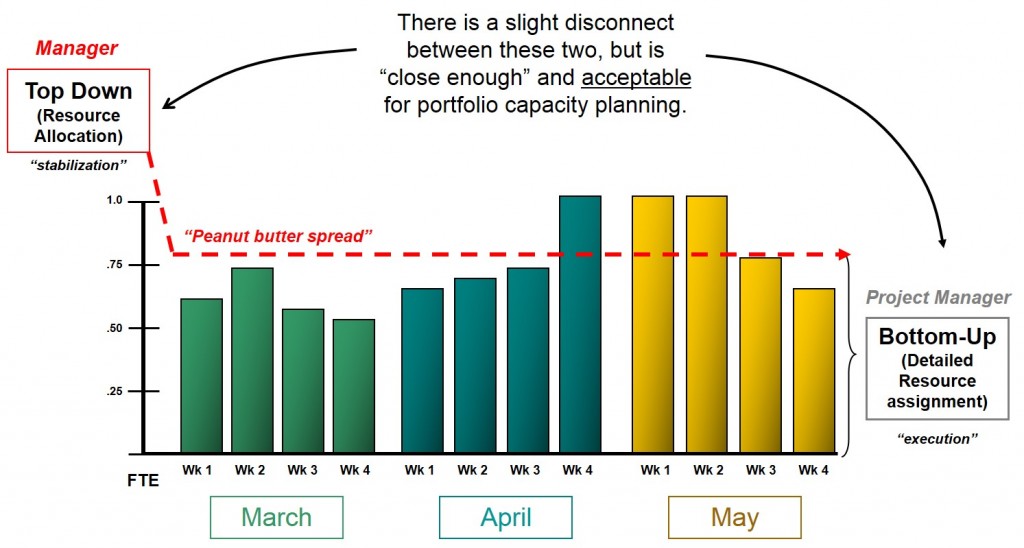Resource capacity planning is a hot topic in portfolio management discussions because it is one of the key steps for optimizing the portfolio, but it is also one of the most difficult processes to perform. For most organizations that operate in a multi-project environment, project demand far outweighs resource supply. Overloading the project pipeline puts added strain to organizational resources and reduces the likelihood of portfolio success. In organizations where human resources are over-utilized, excess overtime and recovery exercises can become common because project teams do not have enough time to complete all work on time. This can lead to delayed projects, and in the long-run, burns people out and lowers morale. Having under-utilized human resources can also be a problem, but not quite as serious as over-utilized resources.
The Goal of Capacity Planning
The primary goal of portfolio management is to maximize the value an organization can deliver through its projects based on limited resources. The goal then of resource capacity management is to protect capacity in order to optimize the portfolio. In other words, the portfolio steering team needs to be very careful about approving projects that overload the system as this can very quickly increase the risk of not meeting portfolio commitments. Approving the highest value projects without overloading the system is a key success factor for portfolio management. The fundamental point is to make sure the organization is executing the most important work within the limitations of its current resource capacity. Therefore, capacity management therefore helps answer two fundamental questions:
- When do we have capacity to commit to additional work? (Portfolio oriented for portfolio optimization)
- Are resources available to complete our committed work? (Project oriented for project execution)
The first question is portfolio oriented because it is looking into the future to understand when new project work can be accepted into the portfolio. This step is critical because it directly affects project execution. Managing resource capacity at the portfolio level helps control work in progress (WIP). Controlling WIP directly benefits project execution because it limits the amount of bad multi-tasking. When resources are significantly over-committed, some activities do not receive adequate attention, thus raising the risk of schedule slides. Therefore, the first step in capacity management is to control the WIP by only approving projects when resources are available or when lower priority work is put on hold in order to free up additional resources for higher priority work. Understanding the organizational resource capacity helps draw a boundary (a constraint) around the amount of project work that can be reasonably accomplished by the organization. Without any boundaries, management may unknowingly authorize more project work and overload the system.
The second question is focused on short-term resource availability and is project execution oriented because the project manager needs to understand if resources are available to accomplish near-term work. If WIP is controlled, then fewer resources should be over-allocated, thus promoting more successful project completions.
